Table of Contents
Vitamin B3 (Niacin, nicotinic acid, 3-pyridine-carboxylic acid) is one of eight B-Vitamins. Niacin is a precursor to the coenzymes nicotinamide adenine dinucleotide (NAD), and nicotinamide adenine dinucleotide phosphate (NADP).
NAD is needed to catabolize fats, carbohydrates, proteins and alcohol. And NAD is involved in cell signaling and DNA repair.
NAD also converts to NADH which is the primary carrier of electrons in the transfer of food from your diet into energy. This energy is created as adenosine triphosphate (ATP).
ATP is produced in mitochondria in each of your cells. Not enough NADH leads to ATP depletion, which can eventually lead to cell death.[i]
The Russian-designed nootropic Picamilon is a combination of niacin and GABA. And is used to improve memory, concentration, focus, relieve anxiety and lower blood pressure.
Studies have shown that supplementing with niacin improves cognitive function, enhances cellular energy, boosts cerebral circulation, increases endurance, switches ‘off’ aging genes, and extends life span.
Niacin helps:
- Protect brain cells. Niacin as a precursor to NAD and NADH repairs cell and DNA damage. And stimulates your immune system. Niacin boosts the production of Nitric Oxide (NO) which relaxes blood vessels in your brain increasing cerebral blood flow. And niacin acts as an antioxidant helping to eliminate free radicals that can damage brain cells.[ii]
- Brain energy. As a precursor to NADH, niacin provides electrons for ATP synthesis within our mitochondria for cellular energy. Low levels of niacin result in brain fog, slow mental processing, and cognitive decline.
- Neurotransmitters. Niacin affects cognitive function by stimulating the production of dopamine, norepinephrine and serotonin.[iii] These neurotransmitters are involved in memory, learning, cognition, recall and mood.
Overview
Vitamin B3 (Niacin, nicotinic acid, 3-pyridine-carboxylic acid) is precursor to the coenzymes nicotinamide adenine dinucleotide (NAD), and nicotinamide adenine dinucleotide phosphate (NADP).
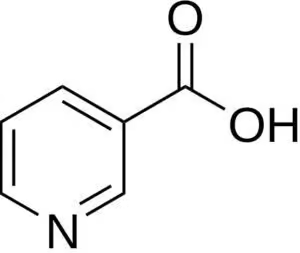
Niacin is found in, and critical for the health of every cell in your body. NADH is the reduced form of NAD (Nicotinamide Adenine Dinucleotide), making it the “active” form which can donate electrons.
NADH is the primary carrier of electrons from glucose and lactate for ATP synthesis. ATP is the fuel source produced within mitochondria. The power supply in each of your brain cells. So you need niacin to produce NADH to transfer the energy from the food you eat into a type of energy your body can use.
Niacin naturally occurs in foods like eggs, fish, meat, milk, peanuts, mushrooms, green vegetables, and yeast.
Your body also naturally synthesizes niacin from the amino acid tryptophan you get from food. Amino acid tryptophan synthesis requires Vitamin B6, riboflavin and an enzyme containing iron.
But only about 2% of dietary tryptophan is converted to niacin. Not nearly enough that your body requires which is why supplementation is needed.
Niacin supplementation has been used to treat addiction, ADHD, arthritis, Alzheimer’s Disease, depression, memory loss and schizophrenia. And for detoxing nearly every foreign substance that can find its way into your fat cells.
As a nootropic, niacin helps boost cognition, memory and neuroplasticity.
How does Niacin work in the brain?
Niacin boosts brain health in several ways. But two in particular stand out.
- Niacin increases cellular energy. Niacin is the precursor to NAD. NAD acts as an electron carrier, meaning it can accept and donate electrons to various enzymes involved in energy metabolism.
NAD is transformed into NADH. NADH then donates its electron to the electron transport chain where a number of ATP molecules are formed.
Using niacin as a supplement increases the available NAD molecules that can take part in energy metabolism. And increasing the amount of energy in each cell.[iv]
By providing the means for ATP synthesis, niacin is involved in cognition, focus, concentration, memory, and processing speed. And niacin plays an important role in mediating brain aging and tissue damage. Even decreasing the damage done by strokes.
Researchers at Massachusetts General Hospital in Boston studied the neuroprotective effects of CoQ10 and niacin in mouse models of Parkinson’s Disease (PD). Impaired energy metabolism has been associated with some symptoms of PD.
Researchers administered MPTP which is poison to neurons. It disrupts the energy metabolism of neurons that release dopamine. The affected dopamine cells are also unable to release as much glutamate which results in decreased dopamine in people with PD.
The combination of CoQ10 and niacin protected against both mild and moderate dopamine depletion. The researchers concluded that CoQ10 and niacin improve mitochondrial energy production.[v]
- Niacin increases Brain Derived Neurotrophic Factor (BDNF). BDNF has been termed “Miracle-Gro for the brain”. Higher levels of BDNF have been associated with increased intelligence, mood, productivity and memory.
Researchers at Henry Ford Hospital in Detroit tested the hypothesis that niacin could increase synaptic plasticity and axon growth in stroke patients.
Male Wistar rats were purposely given a stroke and then treated with extended release niacin (Niaspan) for 14 days. Niacin increased synaptic plasticity and axon growth as a result of restored BDNF.[vi]
Another study published in the Journal of Clinical Endocrinology and Metabolism showed that niacin stimulated growth hormone.[vii]
How things go bad
Niacin deficiency is considered rare by government health agencies, particularly in the West. But even mild niacin deficiency can have a negative impact on your health and cognition.
Mild niacin deficiency can be caused by digestive problems that decreases the amount of Vitamin B3 (niacin) or tryptophan that your body absorbs.
If you are gluten intolerant you’re at a higher risk of being niacin deficient. If you have Irritable Bowel Syndrome (IBS) or Crohn’s Disease you have an increased chance of niacin deficiency.
Excessive alcohol consumption, birth control pills, anorexia, and those on a vegan diet can be deficient in niacin.
↓ Energy levels decline
↑ Fatigue increases
↓ Anxiety, hyperactivity, depression, headaches and hallucinations
↓ Metabolism declines
↑ Insomnia increases
↑ Irritability increases
Some experts believe a lack of niacin and other B-Vitamins is at least partially responsible for the large increase in mental health disorders and violent crimes in recent decades.[viii]
All of these niacin deficiency-related changes are contributing factors to the neurodegenerative diseases of aging, age-related cognitive decline, including Alzheimer’s and schizophrenia.
But even if things haven’t degenerated to such a debilitating level, niacin can help.
Niacin Benefits
Research has shown that people with low niacin levels are far more vulnerable to addiction, depression, heart disease, schizophrenia, and other chronic conditions. Low niacin levels can happen at any age. Even at birth.
Niacin can improve cholesterol levels. Supplementing with niacin has been shown to help those who are at increased risk for heart attacks, stroke and other forms of heart disease.
Niacin can help reduce hardening of the arteries (atherosclerosis) and assist in avoiding heart disease. And niacin helps reduce inflammation.
Niacin plays a role in diabetes treatment because it helps balance blood sugar levels.
Niacin helps to reduce skin inflammation, flare ups, irritation, redness and for treating severe cases of acne.
Niacin can help protect against Alzheimer’s and dementia.[ix] Niacin supplementation is also associated with decreased risk for age-related cognitive decline, memory loss, migraines, depression, motion sickness, insomnia and even alcohol dependence.
Niacin is also used for treating and to help prevent schizophrenia.
Studies have shown that when taking niacin ADHD risks are lowered.
Niacin is an effective treatment for erectile dysfunction (ED) because it acts as a vasodilator that helps improve blood flow to the penis.
How does Niacin feel?
Niacin supplementation can help relieve depression and anxiety. Circulation should improve and you’ll feel like you have more energy.
People taking statins to control cholesterol report severe side effects. But when adding niacin to their supplement stack, most experience a reduction in blood pressure. And some have stopped taking statins as a result.
Those dealing with Obsessive Compulsive Disorder (OCD) report combining niacin with St. John’s wort reduced OCD symptoms. And was better than using the SSRI Prozac®, or the benzodiazepine Ativan® (lorazepam).
Taken before bedtime some neurohackers report a reduction in insomnia.
Lower back pain and hip pain may be reduced with niacin supplementation.
Niacin can help reduce severe acne and other skin inflammation problems.
Niacin Clinical Research
Niacin helps Reduce Bad Cholesterol
Therapeutic doses of niacin have been shown to reduce serum cholesterol. Niacin significantly increases HDL-cholesterol (good cholesterol), decreases LPL-cholesterol (bad cholesterol) and triglycerides. Changes in blood lipid profile considered to be protective of your heart.
Low levels of HDL-cholesterol are one of the major risk factors for coronary heart disease. And an increase in HDL levels is associated with a reduction of that risk.
The Coronary Drug Project was conducted between 1966 and 1975 to assess the long-term efficacy and safety of niacin in 8,241 men aged 30 to 64 years old. All men had experienced some type of heart problem.
Compared to placebo, patients who took 3 grams of niacin daily experienced an average 10% reduction in total blood cholesterol, a 26% decrease in triglycerides, a 27% decrease in recurrent heart attacks, and a 26% decrease in stroke.[x]
Niacin for Detox
If you are dealing with chronic health issues, chances are good you could benefit from a detoxification program. Even if you’re feeling perfectly ‘healthy’ you could likely use a good detox.
Simply living in our modern society exposes us to thousands of chemicals that have the potential to get into our bodies from the food we eat, air we breathe, water we drink and things we touch.
One study done in Portland, Oregon investigated the effects of a 7-day detox program on well-being in 25 disease-free, healthy participants. The 7-day detox produced a statistically significant (47%) reduction in the Metabolic Screening Questionnaire scores. And a 23% increase in liver detox capacity.[xi] Even healthy people feel better after detox.
In 1977, L. Ron Hubbard developed his “Sweat Program” to facilitate detox. The program includes niacin, sauna and a supplement regimen to restore critical vitamins and minerals to the newly detoxed body.
This niacin detox program has been used to treat Gulf War Syndrome, the fire fighters and first responders to the 9/11 attacks in New York[xii], and is used by hundreds of naturopaths.
Niacin affects adipocytes which causes an increase in free fatty acid (FFA) release from adipose tissue (body fat). Release of free fatty acids releases fat-stored toxins for excretion from the body.
Niacin also causes prostaglandin D2 release which dilates small blood vessels in the skin. The same reaction responsible for the “niacin flush”. This dilation increases the movement of xenobiotics (foreign chemicals) for excretion through sweating (which is where the sauna comes into the detox program).
Niacin is also a precursor to NADH which regenerates the master antioxidant glutathione. Niacin reduces inflammation by decreasing reactive oxygen species and inflammatory cytokines.
Niacin helps treat Depression
Niacin is especially helpful if you are taking antidepressants. Drugs to treat depression have an anti-inflammatory effect, including inhibition of the rate-limiting enzyme of the kynurenine pathway. This metabolic pathway is involved in the production of NAD and NADH.
The inhibition of this pathway increases serotonin as more tryptophan becomes available for serotonin synthesis. More serotonin helps decrease depression.
But this also leaves less tryptophan available for niacin synthesis. Which causes depression and basically cancels out the benefits of using antidepressants.[xiii]
So if you’re on SSRI’s you may want to add niacin to your stack.
Niacin for the Treatment of Erectile Dysfunction
Dyslipidemia is the name of the condition involving high LDL-cholesterol (bad), high triglycerides (bad), and low HDL-cholesterol (bad). Dyslipidemia is closely related to erectile dysfunction (ED).
Researchers in Hong Kong ran a placebo-controlled trial with 160 male patients with ED and dyslipidemia. Half the men with ED received 1500 mg of niacin, and the other half received a placebo daily for 12 weeks.
The main outcome of the study was a significant improvement in erectile function. And the researchers concluded that “niacin alone can improve erectile function in men suffering from moderate to severe ED”.[xiv]
Niacin Recommended Dosage
Niacin is naturally produced in your body from tryptophan. And you get niacin from eating certain foods including beef, chicken, tuna, sunflower seeds, salmon, green peas, turkey, and mushrooms. So niacin is considered non-toxic and safe.
Note that higher doses of niacin are usually divided into evenly split doses 2 – 4 times per day. So 1 gram of niacin daily would be 500 mg twice per day.
- Prevention of heart disease: niacin 4 grams per day
- Lowering bad cholesterol and boosting good cholesterol: niacin 4 grams per day
- To slow the progression of newly diagnosed type 1 diabetes: Niacinamide 25 mg/kg of body weight daily
- Preventing or treating Vitamin B3 (niacin) deficiency: 50 – 100 mg per day
- To treat pellagra (severe niacin deficiency): 300 – 500 mg daily
- For treating osteoarthritis: Niacinamide 3 grams per day
- For reduced risk of cataracts: 44 mg of niacin per day
- Preventing Alzheimer’s Disease: 100 mg per day. Note that there is no reliable evidence that niacin can prevent Alzheimer’s although there is plenty of evidence that Alzheimer’s patients consistently show low niacin levels.
- Treating erectile dysfunction (ED): 500 mg 3-times per day
- Treating schizophrenia: 3 grams of niacin and 3 grams of ascorbic acid (Vitamin C) daily[xv]
Niacin Side Effects
Standard niacin (nicotinic acid) is naturally produced in your body. And considered non-toxic.
Niacin can cause low blood pressure so if you are on blood pressure drugs be cautious about supplementing with niacin.
Niacin may decrease the effectiveness of diabetes medication because long-term use of niacin can increase blood sugar. So you may need to increase your diabetes meds.
Statins are notorious for causing muscle wasting. And when combined with niacin it may increase this muscle wasting problem. You may want to cut back on your statins as you increase your niacin dose. Many stop taking statins altogether when using niacin.
Niacin (nicotinic acid) and sustained-release niacin causes “flushing” in many people. Here I address how to reduce or eliminate the side effect of niacin flushing.
Preventing Niacin Flushing
Regular immediate-release niacin (nicotinic acid) causes “flushing” in many people. And they avoid supplementing with niacin as a result.
Standard niacin flushing results from activation of the niacin receptor G protein-coupled receptor 109A (GPR109A) in skin Langerhans cells. This leads to the production of prostaglandins, including prostaglandin D2 (PGD2) and prostaglandin E2 (PGE2), which act on receptors in the capillaries (small blood vessels in your skin).[xvi]
This flushing sensation comes from blood vessel dilation and manifests itself as redness, warmth of the skin and tingling or itching. It happens rapidly and lasts for about 1 hour.
This flushing sensation is NOT an allergic reaction. And only feels uncomfortable. Here are some strategies to avoid niacin flushing.
First, “slow-release” niacin may prevent flushing. But is NOT the answer because it will not provide the LDL-cholesterol (bad) lowering benefits. And can be toxic to your liver when used long-term.[xvii]
Inositol hexanicotinate is commonly referred to as no-flush niacin or flush-free niacin and is preferred by many neurohackers.
Even though I’ve seen a couple of clinical studies claiming this version of niacin has no effect on lipid profiles when it comes to cholesterol[xviii], user reviews consistently report the opposite.
They do not experience flushing with Inositol hexanicotinate even at high doses, and their cholesterol and triglyceride levels all benefited and came within a healthy range.
A newer version of “extended-release” niacin called Niaspan® does not produce the flushing effect. And has been shown to have the same effects on good cholesterol and triglycerides as instant-release niacin.[xix] Niaspan® is prescription-only and is now available as a prescription generic at lower cost.
One effective way to reduce flushing with instant-release niacin and extended-release niacin is to take a 325 mg aspirin tablet 30 minutes prior to taking your niacin.[xx]
You can also try splitting your dose of niacin into smaller doses taken throughout the day. Flushing will be reduced if not completely eliminated. And long-term niacin users note that flushing goes away after about a week of long-term niacin use.
Type of Niacin to Buy
Vitamin B3 (Niacin) is not stored in your body and must be ingested daily from food or as a supplement. Niacin as a supplement comes in several forms: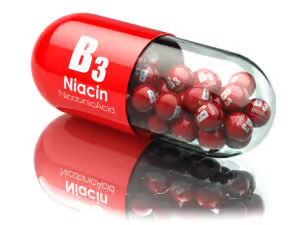
- Niacin (nicotinic acid, (pyridine-3-carboxylic acid) or ‘free-form’ nicotinic acid even at large doses of 3 or 4 grams are nearly completely absorbed by adults. This version causes ‘flushing’ above 50 mg which can be avoided. Refer to the “Side Effects” section of this article on niacin. Doses above 1500 mg per day can be toxic to your liver.
- Niacinamide (nicotinic acid amide) has a similar profile to that of free-form niacin. But unlike free form niacin does not produce a flushing effect. Doses above 3 grams per day can be toxic to your liver.
- Slow-release niacin is nicotinic acid using an ion exchange or wax matrix developed to slowly release niacin to avoid the flushing effect. Liver toxicity has been shown in doses above 500 mg of extended-release niacin.
- Inositol hexanicotinate (IH) is an “extended-release niacin” sold as “Flush Free Niacin” and has 6 molecules of niacin covalently bonded to one molecule of inositol. The IH version of niacin does not produce a flushing effect. Studies show that an average of 70% of the dose you take gets absorbed by your body.
Studies show that the benefits to lowering bad cholesterol with the IH form of niacin are not nearly as effective as free-from niacin.[xxi] But user reviews are the opposite of these clinical findings. No toxicity is associated with high doses of IH.
Slo-Niacin®, is sold over the counter. Niaspan® is an extended-release niacin formula sold as a prescription drug.
Note: Both slow-release niacin and extended-release niacin (inositol hexanicotinate) are marketed and labeled as “Flush-Free Niacin”. But they are not the same and you should avoid slow-release niacin.
Slow-release niacin causes liver toxicity at relatively low doses and does not provide the lipid balancing effects like free-form niacin and extended-release niacin.
Most multivitamins also include some form of Vitamin B3 (niacin) in their formula. But many of these multis don’t contain enough for optimum health. And many have an inferior isolated or synthetic version of the nutrient.
The Performance Lab® NutriGenesis Multi offers a nature-identical form of Vitamin B3 (niacin) and is now my favorite daily multivitamin/mineral supplement.
I prefer the Performance Lab® multi because it’s more potent, it’s biologically active and I’ve found to be a far more effective multi compared to every other multivitamin supplement I’ve ever used.
Performance Lab® uses their own patented NutriGenesis® vitamins and minerals which are grown on probiotic, plant and yeast cultures in a state-of-the-art lab.
Nootropics Expert Recommendation
Vitamin B3 (Niacin) 500 mg twice per day
 I recommend using “extended-release” Niacin (Inositol hexanicotinate) as a nootropic supplement.
I recommend using “extended-release” Niacin (Inositol hexanicotinate) as a nootropic supplement.
Your body does make some Niacin on its own. And you can get it by eating meat, poultry and fish. But studies have shown we don’t get an adequate supply of Niacin from food sources.
Niacin is particularly helpful for vegetarians because very little Niacin is available from vegetables.
Niacin is especially helpful for those suffering Chronic Fatigue Syndrome and ADHD.
I suggest starting with a dose of 500 mg daily. And Niacin is a great compliment to a stack including any nootropic. Do your best to use either free-form niacin if you can tolerate the flush. Or even better, use an extended-release version of niacin that has no flush and no associated toxicity.
You need to provide your brain with the nutrients including niacin needed to create ATP within brain cell mitochondria. Or neurons start to break down from the inside. Signs that you’re lacking adequate Niacin is brain fog, slow thinking, fatigue and low endurance.
Some clinics in the USA and other countries are using Niacin therapy as a treatment for addiction, anxiety, depression, chronic stress and even schizophrenia.
I recommend starting with a low dose of Niacin until you build a tolerance to avoid the niacin “flush”. Increase your dose every few days until you get to the dose you find gives you the most cognitive benefit.
At the very minimum every neurohacker should be using a multivitamin every day that includes Vitamin B3 (niacin). The best multi I’ve found and use every day is the Performance Lab® NutriGenesis Multi for men or women.

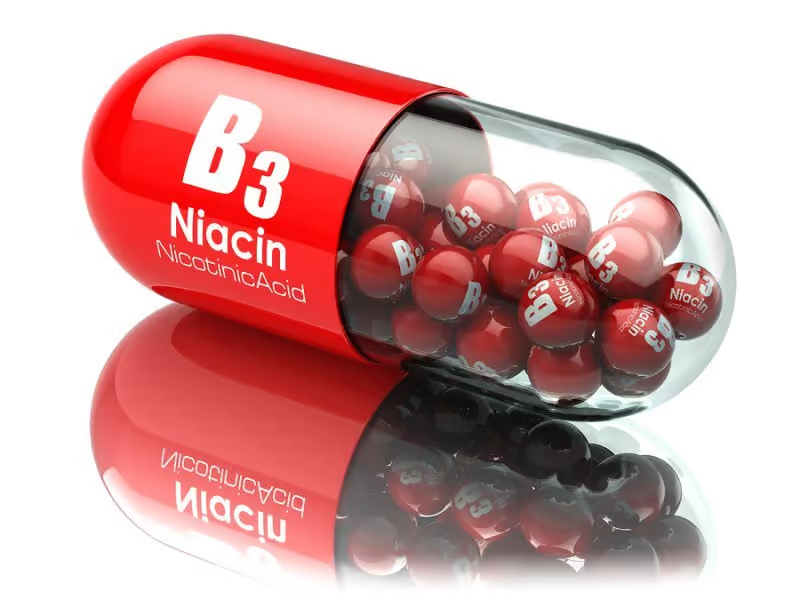
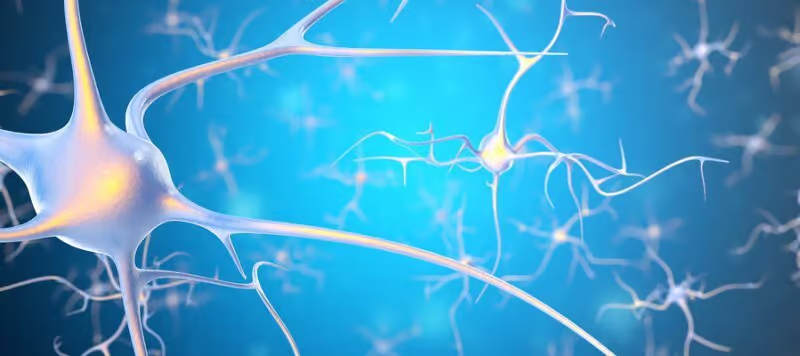


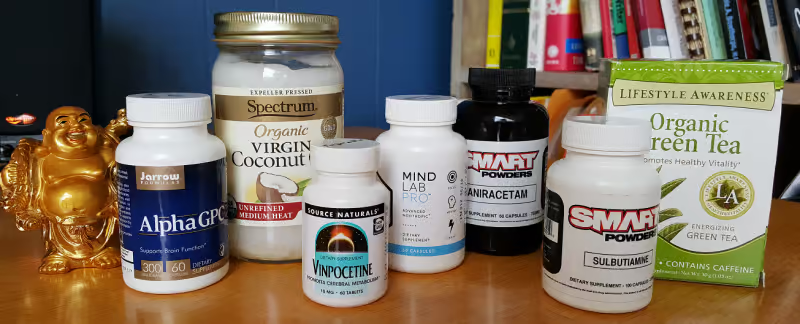



Join The Discussion - 218 comments
Aelxa
September 11, 2018
Hi David,
I am trying to deal with severe problems making decisions, papers are piling up everywhere in my house because I can no longer decide if I need to keep it or if I can throw it away. Half my bed is covered in papers and my anxiety is going up because my brain is not working right.
This is after my pain management physician took me off 2 of the 3 pain medications I was on for the chronic pain in the space of 30 days. I have been on medication for over 25 years. I was stable and on the same amount of medicine for years. Then all this craziness about people dying from opiods happened.
I spent 18 months flat on my back in bed trying to deal with the extreme pain, fatigue, and inability to do anything but try to breath through the pain. And after switching to another pain management physician who got my pain under control with the use of a electric device called Hakomed, and getting my thyroid T4 and T3 levels into midrange, my pain levels are now at 2-3 with minimal oral medication.
But my mental abilities after that 18 month period are almost non-existent. I can read a book and a week later I can only vaguely remember what happened in the story. Papers and mail are impossible to deal with. I can no longer knit, I do not understand the written pattern instructions anymore. My house looks like a hoarders home, except it is mostly just papers.
This is very distressing and I have been looking on PubMed for medical solutions, my medical knowledge and understanding are still somewhat intact, except I have to write everything down in a ringbook because after a week ideas get vague, and I have to re-read my notes. I have had Cat and MRI scans, EEG, and neurology workup and no one knows what to do other than this is my new normal.
I refuse to accept this as my new normal.
I read about niacin, GABA and Picamilon.
What do you recommend, I really want my brain back and to be able to make decisions again.
David Tomen
September 11, 2018
Aelxa, using potent prescription meds like you have for decades causes brain damage. There is no other way to gentle say this. And you will need to put together a plan to repair as much of this damage as you can.
This is take far more than niacin, GABA and Picamilon. To keep it as simple as possible, I suggest you try using some pre-made nootropic stacks. In our case I suggest a high quality multivitamin like the Performance Lab Whole-Food Multi: https://nootropicsexpert.com/performance-lab-whole-food-multi-review/ to give your brain the basic fundamentals it’s asking for.
And include something like Mind Lab Pro but at double the dose suggested: https://nootropicsexpert.com/mind-lab-pro-review/. Or a combination of the Performance Lab Energy and Mind stacks: https://nootropicsexpert.com/performance-lab-energy-review/ and https://nootropicsexpert.com/performance-lab-mind-review/.
All the above will provide your brain and body what it needs to right now and do some repair at the same time. Consistent use of this type of combo for at least month should start providing some noticeable benefits. I also suggest your research every single ingredient in each of these stacks to learn exactly what they do. Once you are comfortable in your knowledge you may want to add other single nootropics supplements to speed up your recovery (i.e. Turmeric or Curcumin).
Maxwell
August 27, 2018
Hello why isn’t niagen mentioned at all I’d love you thoughts, is it as good? Better?
David Tomen
August 27, 2018
Maxwell, Niagen is a brand name for nicotinamide riboside which is another source of Vitamin B3. And a precursor to nicotinamide adenine dinucleotide (NAD) (https://www.ncbi.nlm.nih.gov/pubmed/24071780).
I try to distill the neuroscience for each of these nootropics down into language that anyone can understand. In some cases, like with niacin, the different forms and brand names can simply get too confusing for those of us who don’t have a degree in neuroscience.
One form may work better for some than another. So, nicotinamide riboside is “good” but not necessarily “better” than another form. It depends on each person’s unique body chemistry, gene expression, and diet.
Joha
August 17, 2018
Hi, i’m taking Niacin plus Bcomplex (LifeExtention) wich contains Niacinamide plus Niacin 100 mg, since the moment i started to take them i felt sleepy, i thought it was a normal effect, but till the moment i took 400 mg of niacin plus the b complex i felt really sleepy and tired so i went to check my blodd pressure and it was too low (80/50) even though i tend to have little numbers(100/80 or so) beacuse i’m a small person 🙂 they say, now i’m a little scared to even take the bcomplex because i don’t know if i’m going to have a heart attack or something…
The reason i’m taking them is because in the latest year i have a very irritative moods change and I can’t sleep well, take too long and wake up a lot during the night, and get sad really easy and over worry about everything…
i thought i was doing good with Niacin and the BComplex But now i don’t know what to do!
I was thinking on taking Gaba or Coolin but i might need your help to recommend me what you think is best for a 26 years old woman with mood changes! 😀
Thank you so much!
David Tomen
August 18, 2018
Joha, one of the side effects of niacin supplementation is lowering blood pressure. So it sounds like niacin and or any B-Complex supplement containing high amounts of niacin are not for you. Don’t get me wrong. Your body and brain require niacin. But in your case, you’ll likely have better luck with lower doses (i.e. 25 mg).
You have so many more options for helping you sleep, and improve your mood.
Please see this post on best nootropics for sleep: https://nootropicsexpert.com/best-nootropics-for-sleep/
And this post on nootropics for depression: https://nootropicsexpert.com/best-nootropics-for-depression/. This post is important because you’ll find that one pill will not fix all. And there are many causes of depression, mood swings and irritability.
It will likely take several different supplements (or one or two pre-formulated stacks) before you experience relief. But unless you know exactly what is causing these symptoms, you’ll need to experiment until you find the right combination of nootropics for you.
IAN PEARSON
June 19, 2018
i have had good results on mood with niacin (nicotinic acid)and found the powder gives me a good sustained flush.I did have some side effects like felt heart pounding at night in bed though i only noticed this with the pills.Tried niacinamide version and this did nothing for my mood.I think the flush is an integral part of niacins beneficial effects if you can handle it.I think in the nicotinic acid form its one of the most consistent supplements for mood though i noticed no effect on anxiety levels.
am
April 11, 2018
Hi.
Please tell me what NIACIN NICOTINIC ACID and Nicotinamide are made from? How are they made?
Thank you
David Tomen
April 11, 2018
Most niacin for use in supplements is made in China. And is made primarily by oxidation of 3-picoline (https://www.prnewswire.com/news-releases/production-situation-and-future-development-of-niacin-in-china-166091296.html).
Nicole
August 4, 2018
Hi my name isNicole my son has schizophrenia I give him 500gm Battle off niacin b3lik 60ct a Day last night is OK ?no Flash vitamin b3 niacinenough What do you suggest for him I need help please help me with my son I don’t know what to do thank you Nicole
David Tomen
August 4, 2018
Nicole, please re-write your question. I’m having difficulty understanding what you are asking.
JMPR
January 20, 2018
HI, I find I feel almost addicted to the flush from Niacin. It can be uncomfortable and a little painful and yet I find I wish I could experience it a few times a day. I don’t over-supplement (never more than 1000 mg a day) but I wish I could take more and would always experience a flush. I was curious if you’ve ever heard of anyone feeling like this and if you know of why someone might feel this way?
Secondly, because I do really like the flush, I would prefer to take free-form instead of IH but you seem to indicate IH is best. Is that just because of the lack of flush and because large amounts don’t cause liver toxicity? If I stay at 1000 mg of free-form is it as good/beneficial as IH?
Thank you!
David Tomen
January 20, 2018
I’ve never heard of anyone enjoying the flush caused by regular niacin. And clinical studies report that dosing more than 1,500 mg per day can be toxic to your liver. If you can stand the flush then free-form niacin is great as long as you keep it under 1,500 mg per day.
I recommend Inositol hexanicotinate (IH) because it seems to provide all the benefits of free-form niacin. But without flushing or toxicity at higher doses.
JMPR
January 20, 2018
Thanks! I’ve asked in a few message boards, etc. and found just a few others who feel “addicted” to the flush but no one knows why. I guess I’m wondering if it’s just a quirk that a few of us have. Or if there could be some sort of vitamin/mineral deficiency or biochemical imbalance, etc. that is causing such a strong desire for that sensation. Does that make sense?
David Tomen
January 20, 2018
Standard niacin flushing results from activation of the niacin receptor G protein-coupled receptor 109A (GPR109A) in skin Langerhans cells. This leads to the production of prostaglandins, including prostaglandin D2 (PGD2) and prostaglandin E2 (PGE2), which act on receptors in the capillaries (small blood vessels in your skin).
It could be a deficiency but no idea of what. For most people, the niacin flush eventually subsides with continued use of free-form niacin. On a very basic level there as two forms of addiction; physical and psychological. It is highly unlikely an “addiction” to niacin is a physical dependence. Unless your body is telling you it desperately needs more blood flow.
Aelxa
September 12, 2018
Hi JMPR,
Acute sudden pain can cause the body to release large amounts of endorphins. The endorphins will make you feel good, this is most likely what is causing you to like and look forward to the flush and pain.
Aelxa
H.
July 2, 2019
But nobody (that I know of) enjoys toothache, for example, do they? Or a headache; or any sort of pain, really. A few weeks ago I almost broke my foot; I literally saw “stars”, but I don’t remember any good feeling afterwards.
Anyway, there is no PAIN involved in the niacin flush.
I do kind of enjoy the flush myself. It makes me feel more “alive”, I guess; but the thing I am really looking forward is the moment when I feel this delightful cool feeling in and around my ears – like a breeze blowing in – and the chill on my arms when the flush is subsiding.
I suspect it’s mostly psychological (a temporary relief from the intense sadness and worry that have been weighing me down for the past few years), but it could also be an increased need for circulation. Who knows. Anyway, JMPR certainly isn’t alone in his/her enjoyment of the flush. 🙂
H C
February 1, 2020
I have about the same weird pleasure about the flush, also I found a similar feel in fiery hot spicy food. After I realised that I probably damaged somehow my gut flora with the hot spices, I got calmer with only milder levels of hotness of the foods. I noticed also the rush with the chills and that pleasure of feeling finally back alive could be achieved at climbing, preferably a real mountain, but even a number of stairs. So my conclusion from these is the “addiction” could maybe related to the level of oxygen carried in the blood at a moment
David Tomen
February 1, 2020
HC, the flushing sensation caused by niacin is produced by a very different mechanism than more oxygen with better blood flow.
Standard niacin flushing results from activation of the niacin receptor G protein-coupled receptor 109A (GPR109A) in skin Langerhans cells. This leads to the production of prostaglandins, including prostaglandin D2 (PGD2) and prostaglandin E2 (PGE2), which act on receptors in the capillaries (small blood vessels in your skin). – https://www.ncbi.nlm.nih.gov/pmc/articles/PMC2779993/
But niacin also helps dilate blood vessels meaning better blood flow and more efficient oxygen delivery.
Kenneth
December 22, 2017
Dear Sir,
I’m about to take niacin for anxiety disorder. I’m also considering taking SAM-e. I was wondering if I can combine the two, and to what extent. I’m wondering which one works best for dopamine receptor functioning. I’ve had addiction to pornography and orgasm as a teenager of which I’m sure it has affected my health (currently still in withdrawal from that) and, especially, dopaminergic system functioning. I see you advise Rhodiola for anxiety. I’ve taken this but I tend to get chest pains on it. I also get chest pains from beta blockers. SSRi’s help somewhat but they don’t enhance my mood 100%. I’m quite sure I need to regulate GABA and dopamine levels more than anything. Only benzodiazepines are capable of making me actually happy. You’d expect that from SSRi’s, but they don’t do a lot for me. They also cause massive weight gain. Any idea of why Rhodialo would create chest pains? And if so, could the compound causing it be an active ingredient in either SAM-e (or niacin, which I doubt)? I have several food sensitivities which makes me think I’m high in histamine. I really, really need to balance my metabolism if I want to get my health back. Prescription medications help but seem to mask the symptoms rather than fixing them. I’m on a healthy diet and avoid processed sugar as much as possible. Regardless, I do have an intolerance to glucose/fructose. Very, very sluggish metabolism. Things like milk thistle extract and maca seem to be capable of speeding up my metabolism, to the point where I can actually hear my digestive system working, but with paradoxical results. I really need something that slows down the excitatory system and activates serotonin/dopamine metabolism at the same time, especially at the receptors. I’m hoping niacin is it. I’ve heard good things about it, seems to be capable of neutralizing the effects of adrenaline? For some reason I react badly to supplements if taken too much or too long. Oddly these are the things I’m most in need of. For instance taking zinc, because I’m low on it, will cause testicular pain. Would love to hear your advise. Thanks in any case
David Tomen
December 23, 2017
Kenneth, you can absolutely take niacin and SAM-e together. Both are intricately involved in your mitochondria and ATP. I highly recommend complimenting them with the rest of the B-Vitamins as well. Because all of them at some stage are required for the synthesis of all your major neurotransmitters. But if you get a B-Complex stack, please make sure it contains folate (and NOT folic acid) and methylcobalamin (and NOT cyanocobalamin). It’s hard to find because most use folic acid and the cyanide version of Vitamin B12. Life Extension makes a good B-Vitamin stack.
Rhodiola does not contain niacin or SAM-e.
We often say “your mileage may vary” with any nootropic. Because each of us is unique. So if Rhodiola causes chest pain then do not use it. Sorry, but I haven’t been able to pin-point why you would get that symptom with Rhodiola. But it could be that what you thought was Rhodiola Rosea was something else in that bottle. There is a huge problem with adulteration and swapping of ingredients with Rhodiola Rosea because of the demand and short supply.
You mentioned success with benzos so take a look at Ashwagandha. https://nootropicsexpert.com/ashwagandha/. Others to consider are Kava https://nootropicsexpert.com/kava/, or CBD Oil https://nootropicsexpert.com/cbd-oil/.
I also highly recommend DHA (Omega-3) for you for a whole host of reasons which I haven’t time to go into here. Please read my review on DHA here> https://nootropicsexpert.com/dha/
You need to keep serotonin and dopamine in balance. Excess of either will cause huge problems. Too much serotonin and you are in danger of serotonin syndrome. Too much dopamine and it’ll convert to norepinephrine then epinephrine (adrenaline). The last two can cause anxiety and other nasty symptoms.
Testicular pain from supplementing with zinc is likely caused by excess estrogen. Try taking zinc with magnesium and Vitamin B6 which work together. You need all three and should be using them everyday anyway. You can try Grape Seed Extract to help reduce estrogen. I also highly recommend getting your testosterone and estradiol levels checked. If estrogen does come back high as I suspect, see if you can talk your doctor in prescribing low-dose Arimidex (.5 mg twice per week).
Vitamin B8 (inositol), especially the myo-inositol version can help regulate your metabolism. Please read this post on inositol here: https://nootropicsexpert.com/vitamin-b8-inositol/.
Last word for now… Do a search for “dopamine receptor” using the search box up top. And see what turns up.
BRIAN WRIGHT
October 3, 2017
I have follicuritis? I take 1000 to 1500mg a day.. i believe it to be related to staph? Any advise of what else as i can do???
Please, thank you.
Brian
David Tomen
October 6, 2017
Brian, follicuritis as you know is inflammation around the hair follicle at the skin level. It has a number of causes including bacterial infection. Niacin is a great start because it’s an anti-inflammatory. The other nootropics you may want to consider all fight inflammation. And a couple of them have been shown to promote healthy skin.
Please review each of the following:
https://nootropicsexpert.com/gotu-kola/
https://nootropicsexpert.com/l-carnosine/
https://nootropicsexpert.com/pine-bark-extract-pycnogenol/
https://nootropicsexpert.com/turmeric/
You could take all of them. But it’s probably wiser to try one or two and see if you get any results. If they don’t work then get the next one on your list. I’d start with Pycnogenol and Turmeric. If you decide to use Turmeric, please read the “dosage” instructions and “forms available” carefully to make sure you get a supplement that is highly bioavailable. And take enough of it to work.